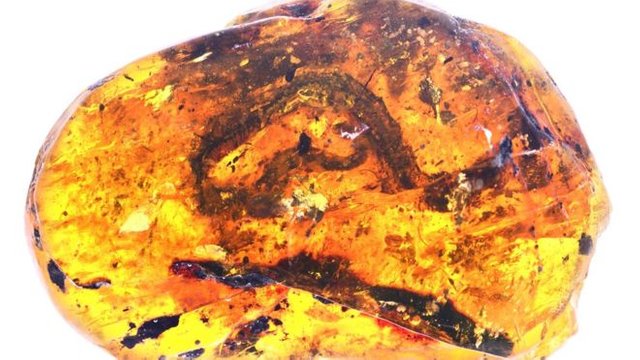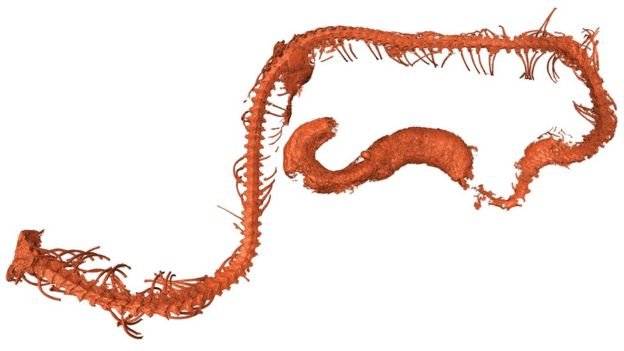A great discovery of a 99 million-year-old snake
The remains of a small snake, buried inside an amber substance, were discovered in a fossilized tree trunk in Myanmar.
The snake is frozen inside the amber mass, about 99 million years ago.
The snake lived in what is now Myanmar, during the dinosaur era.
Scientists say the fossil remains of the snake are "incredibly rare."
Professor Michael Caldwell of the University of Alberta in Canada told the BBC: "These are the oldest fossil remains of a small snake, which is discovered at all."

The small serpent lived in Myanmar's forests during the Cretaceous period. The name of the snake was given to the dawn of Myanmar.
Another fossil was found inside the amber material, which appears to contain part of the skin of a snake much larger than the first. It was not clear whether the last snake belonged to the same species.
How to freeze the snake immediately?
The snake sticks in a tree juicer, a sticky substance, which can save skin, scales, fur, feathers, and even whole creatures.
"It's the glue in the fossil record," says Professor Caldwell.
"The amber is completely unique, everything that touches it immediately freezes within the plastic-like adhesive material."
What does this discovery tell us about these icon creatures?

The remains of the serpent's body can be seen within a mass of amber, consisting of 97 vertebrae as well as the ribs attached to it. Interestingly, the snake's head is missing.
The bones of the snake were analyzed inside the synchrotron, a very powerful X-ray source, and compared to live snake bones.
Anatomical characteristics indicate that the evolution of the spine of snakes seems to have changed slightly, during nearly 100 million years.
Scientists say this type of snake may have lived for tens of millions of years, in a normal state before it is extinct.
His place of living
The remains of plants and insects, found within the amber piece, confirm that the serpent lived in the forest.
This has not been proven before, since the few snake fossils discovered have come from rocks linked to rivers or seas.
Dr Ricardo Perez de la Fuente, of the University of Oxford Natural History Museum, who did not participate in the study, said the discovery gave "very valuable data on the development and growth of old snakes."

Myanmar is seen as a treasure trove of discoveries dating back to the Cretaceous period between 66 and 145 million years ago.
Recent discoveries include a trail of feather dinosaurs, spiders and a number of frogs dating back to prehistoric times.
Details of the new discovery were published in the journal Science Advances.
Congratulations @apdo2018! You received a personal award!
You can view your badges on your Steem Board and compare to others on the Steem Ranking
Do not miss the last post from @steemitboard:
Vote for @Steemitboard as a witness to get one more award and increased upvotes!